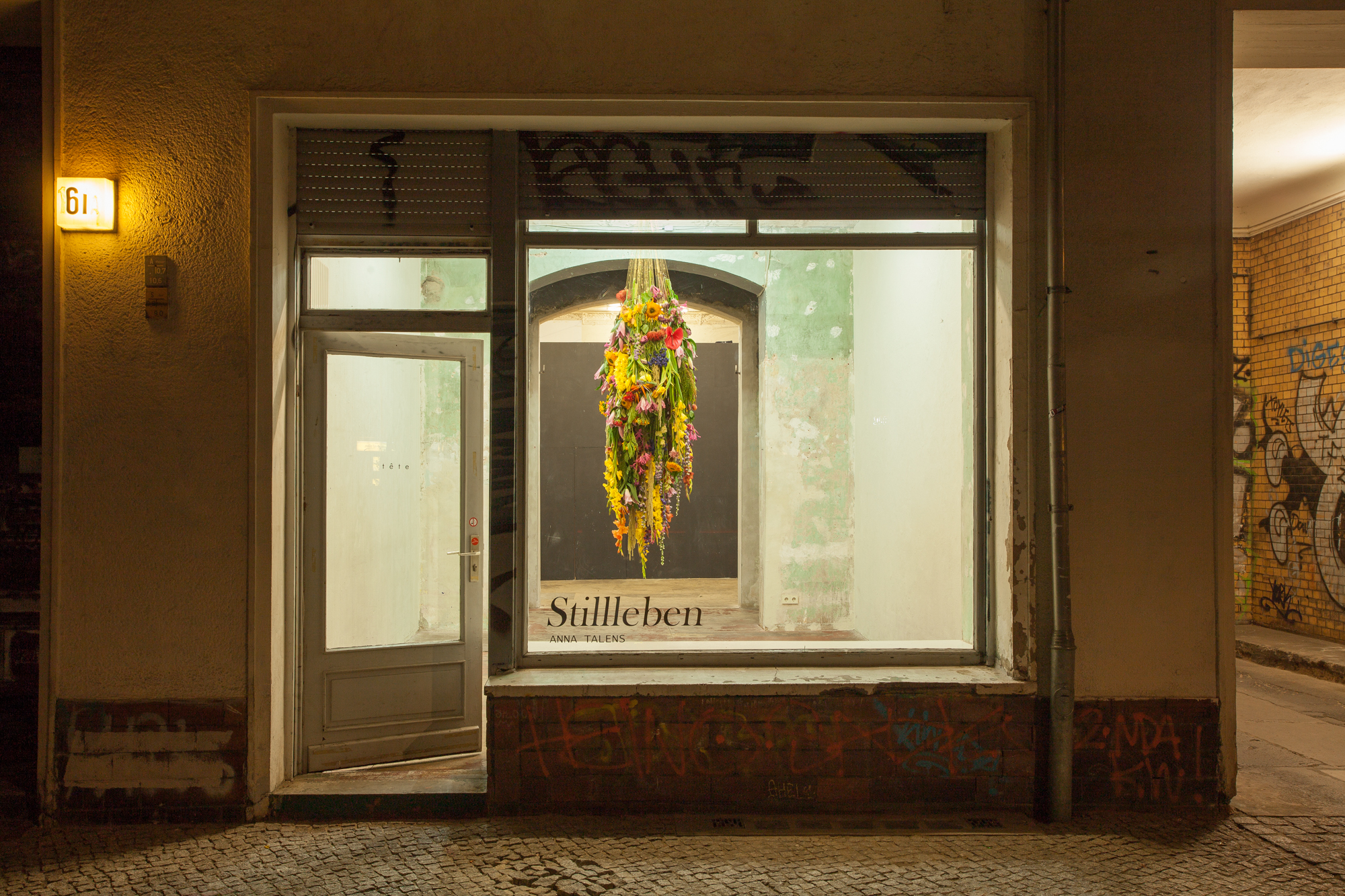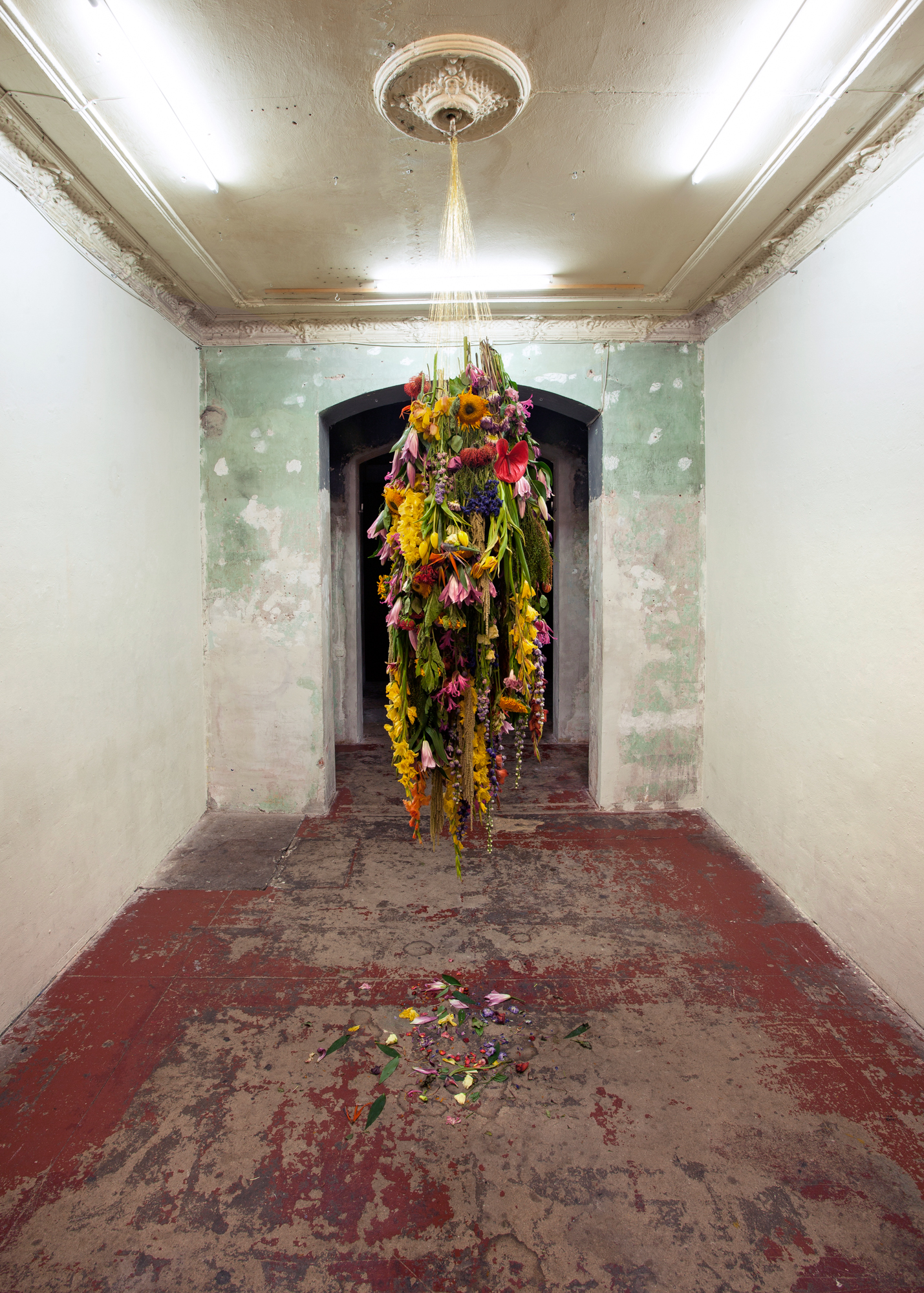
Stillleben
Berlin, 2018
Flowers and brassTête Project Space
With the collaboration of Marsano Berlin
The hooks in the ceiling of the Tête exhibition space in the Prenzlauer Berg district of Berlin from where the old chandeliers used to hang can still be seen. Those ceiling rosettes are in many buildings in the city. The plaster ornaments and the aged walls were typical of what is known as Altbau (historic building). But, like so many others, this space is in danger of extinction. Day after day Berlin succumbs to the effects of the gentrification and with it, it mutates in its aesthetics and its urban design. Stilleben is an ephemeral sculptural object, designed for a transient architectural state. It is a floral still life, created with various kinds of natural flowers that were dried for days. The room had a window that looked out onto the street and it was like a shop window display. It was lit up at night, during the week, so that people passing by could see its evolution. For a few hours during the day, the space was opened up to the public.


An intense smell of flowers emanated from the room. The people spoke to me about parties, weddings, presents, funerals; situations where flowers appear in one way or another. These living things that we cut and put into vases, to enjoy their beauty; are in a stage of being, as they say in German, `Stillleben ́ or in Spanish `naturaleza muerta ́. I always say that something unexpected appears in each installation, and here it was the smell. A different way of communicating, which triggers the sense of smell and memory.
This installation reproduces the idea of the Baroque vanitas. It muses on the transience of places and human beings. It tells us about the intermediate stages between the ruin and the new construction, the fragility of architecture and life, because nothing can escape its fate: “Vanity of vanities; all is vanity”, in the words of the Preacher in the Book of Ecclesiastes. And indeed, in the end, the power of nature prevails over any attempt at perpetuity.


